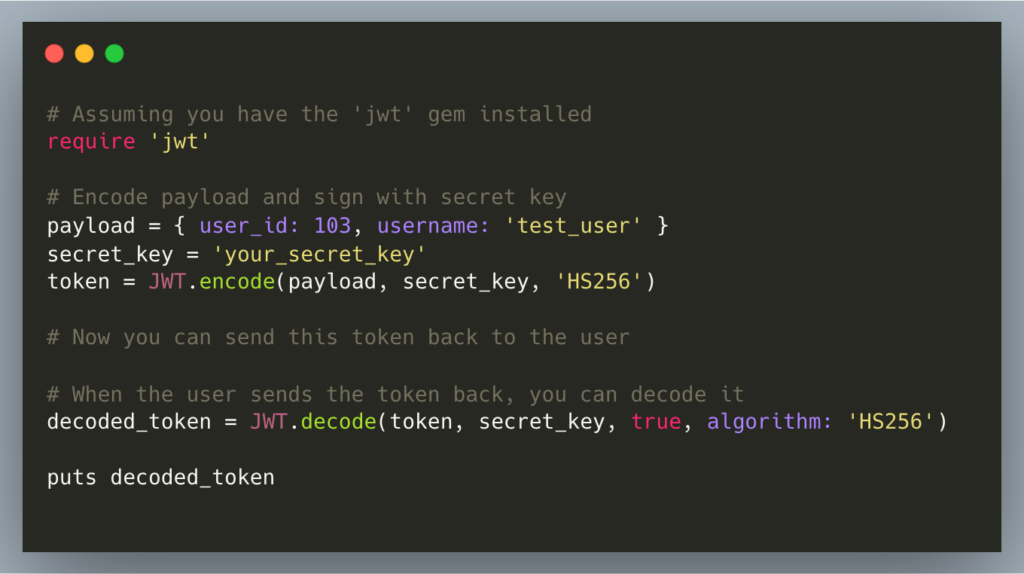
When you’re building a Ruby on Rails API, security is crucial. One key aspect of ensuring security is understanding how JWT (JSON Web Tokens) tokens work. In this guide, we’ll break down the basics of JWT tokens in Ruby on Rails APIs with easy-to-understand explanations and practical examples.
What’s a JWT Token?
JWT tokens act like digital ID cards, containing essential user information such as name, role, and permissions. These tokens are encoded using a secret key, making them secure yet easily transferable between systems.
How JWT Tokens Work?

Imagine a user trying to access a protected route on your API. They send their credentials (e.g., username and password) to the server, which verifies them. Upon successful verification, the server generates a JWT token and sends it back to the user. From then on, the user includes this token in their requests to access protected routes, akin to presenting a digital ID card for verification.
Anatomy of a JWT Token
A JWT token comprises three parts: header, payload, and signature. The header contains metadata, the payload stores user data, and the signature ensures the token’s integrity. By combining these elements and a secret key, the token remains secure and tamper-proof.


Really helpful, thanks!